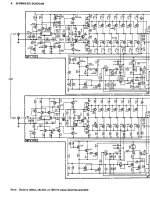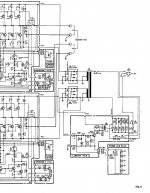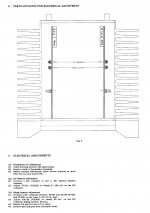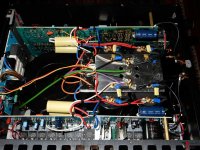Hi all
I've just measured some temperatures (celsius) on my poweramp Nakamichi PA7 (mark 1):
After one hour in idle state, the temperatures on the two large heatsinks are between 40 and 45 degrees. I think that should be ok.
After that, I opened the casing and measured the temperatures of the 4 transistors Q110, Q111, Q210, Q211 (they have their "own" little heatsinks (L-shaped).
These temperatures were about at 80 degrees! I'm afraid that this is too high. Or is this ok? Can I lower these temperatures with another bias-setting?
Thanks a lot and regards from Switzerland
Andy
I've just measured some temperatures (celsius) on my poweramp Nakamichi PA7 (mark 1):
After one hour in idle state, the temperatures on the two large heatsinks are between 40 and 45 degrees. I think that should be ok.
After that, I opened the casing and measured the temperatures of the 4 transistors Q110, Q111, Q210, Q211 (they have their "own" little heatsinks (L-shaped).
These temperatures were about at 80 degrees! I'm afraid that this is too high. Or is this ok? Can I lower these temperatures with another bias-setting?
Thanks a lot and regards from Switzerland
Andy
I don't have a schematic, but I assume you are talking about TO-220 style
devices on little sinks.
Probably they are OK. What is most important is that the chip temperature
doesn't approach the 150 deg C. rating, and it is likely with that setup
that the chip is only a few degrees above the 80.
devices on little sinks.
Probably they are OK. What is most important is that the chip temperature
doesn't approach the 150 deg C. rating, and it is likely with that setup
that the chip is only a few degrees above the 80.
PA7 and PA7E
Resized from much larger tiff images.
Resized from much larger tiff images.
Attachments
Last edited:
@Nelson Pass: Yes, I'm talking about the TO-220 style devices, see the schematics in the post above from Old'n'Cranky.
Please, can you tell me in some sentences, what is the "task" of these 4 (2 per channel) devices?
@Old'n'Cranky: Thanks you very much for the schematics!
I wonder why Nakamichi didn't put these transistors also on the large heatsinks..
Please, can you tell me in some sentences, what is the "task" of these 4 (2 per channel) devices?
@Old'n'Cranky: Thanks you very much for the schematics!
I wonder why Nakamichi didn't put these transistors also on the large heatsinks..
if you're asking for Q110 and Q111 , they're emiter followers and part of biasing stage
VR101(201) is for output offset , VR102 (202) is for Iq
random picture from net - I see heatsinks , dunno is that later addendum by owner or factory
in any case , there is a place for some heatsinking
VR101(201) is for output offset , VR102 (202) is for Iq
random picture from net - I see heatsinks , dunno is that later addendum by owner or factory
in any case , there is a place for some heatsinking
Attachments
Last edited:
Thanks, Zen Mod. I understand now why they are getting hot (high bias)
Well, there are tiny heatsinks as in your picture, but inside a casing without any "holes" for airflow, this makes no sense. I'm thinking of modifying the casing for better airflow...
Well, there are tiny heatsinks as in your picture, but inside a casing without any "holes" for airflow, this makes no sense. I'm thinking of modifying the casing for better airflow...
if nothing else , put 5-8mm spacers between bottom plate and heatsinks , same for top plate
of course , you'll need longer screws , for same amount
for test , you can use , say , 8mm nuts as spacers ...... later find some nice ones
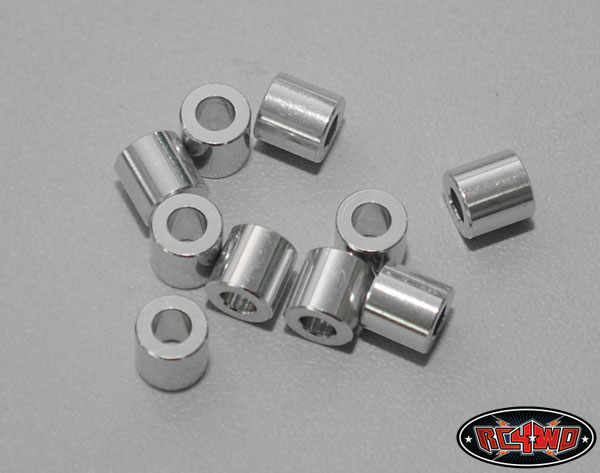
of course , you'll need longer screws , for same amount
for test , you can use , say , 8mm nuts as spacers ...... later find some nice ones

Zen Mod, yes, I had exactly the same idea. I will use the following (see picture) for the
top plate. Not sure with the bottom plate, if it is enough stable with these. I will see.

top plate. Not sure with the bottom plate, if it is enough stable with these. I will see.

well , for air you need inlet , same as outlet
so , you need to do same thing with both plates
I believe bottom one is thick enough , while screws will do fine , even with much greater pressure force
though , greater OD of spacers will serve better than these extending screws
so , you need to do same thing with both plates
I believe bottom one is thick enough , while screws will do fine , even with much greater pressure force
though , greater OD of spacers will serve better than these extending screws
- Status
- Not open for further replies.
- Home
- Amplifiers
- Pass Labs
- Temperatures Nakamichi PA-7
